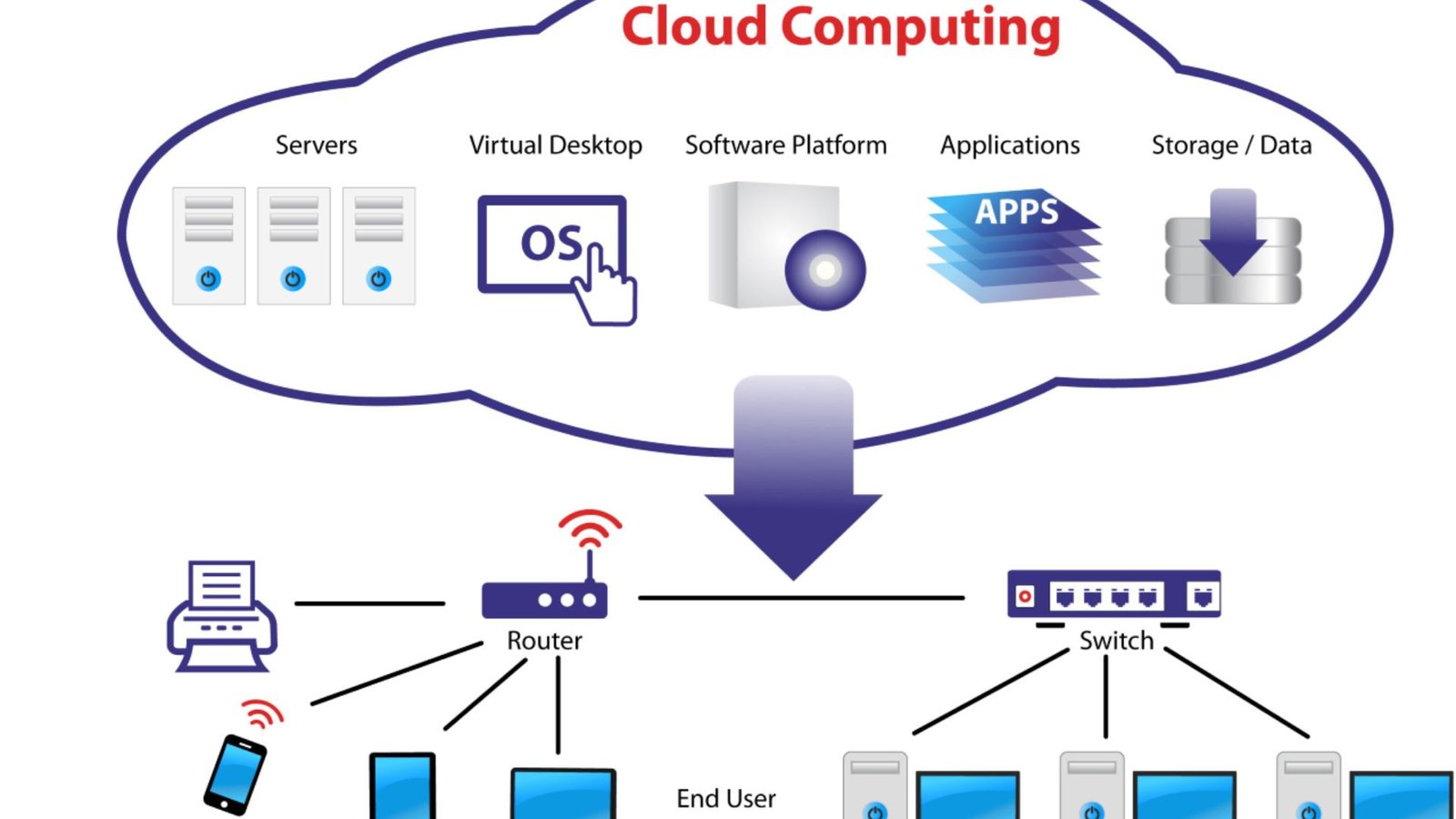How Cloud Computing Transforms Architecture Projects
Cloud computing is revolutionizing the architecture industry by providing new tools and opportunities. By leveraging cloud technology, architects can enhance their workflows, improve collaboration, and make more informed design decisions. Here’s a closer look at how cloud computing is transforming digital architecture projects.

Easy Access to Design Files Anywhere
Anytime, Anywhere Access
Cloud computing allows architects to store their design files online, which means they can access these files from any location. This flexibility is particularly useful for architects who travel frequently or work from multiple locations. For instance, an architect working remotely can access project files just as easily as someone working in the office.
Improved Flexibility
This accessibility removes the constraints of being tied to a specific workstation. Consequently, architects can work more flexibly and efficiently, adapting to their schedules and work environments. As a result, the design process becomes more streamlined and less dependent on physical office setups.
Real-Time Collaboration and Updates
Collaborative Workflows
One of the standout benefits of cloud computing is its ability to facilitate real-time collaboration. Multiple team members, including architects, engineers, and clients, can simultaneously work on the same design. For example, changes made by one person are instantly visible to everyone else, which helps prevent miscommunication and errors.
Up-to-Date Information
Additionally, real-time updates ensure that all team members are working with the most current version of the project files. This reduces the risk of outdated information being used and improves the overall accuracy of the project. As a result, decisions are made based on the latest data, leading to better project outcomes.
Efficient Project Management
Streamlined Task Management
Cloud computing offers advanced project management tools that help architects keep track of tasks, deadlines, and budgets. For instance, project management software can be used to assign tasks, set deadlines, and monitor progress. This not only helps in organizing the workflow but also ensures that the project stays on schedule.
casinous american sports betting site
For those seeking a dynamic and rewarding betting experience, the casinous american sports betting site provides a secure and user-friendly platform. Much like My Aromatica offers curated and high-quality products, this sportsbook emphasizes reliability, ease of use, and engaging features. Players can enjoy access to a wide range of sports markets, competitive odds, and special promotions. It’s an ideal destination for combining strategy, entertainment, and real rewards in one convenient place.
Exploring Architecture and Design
MyAromatica.com explores architecture, design, and the fusion of art and functionality in creating beautiful spaces. For a different kind of engaging experience, discover australia best online casino real money. Experience the thrill of online games.
Budget Control
Moreover, cloud-based tools can assist in managing project budgets by providing real-time financial tracking and reporting. Consequently, architects can make informed decisions about resource allocation and financial planning, leading to more efficient project management.
Enhanced Data Storage and Security
Secure Storage Solutions
With cloud computing, architects benefit from secure and reliable data storage. Cloud providers implement advanced security measures to protect sensitive project data from unauthorized access. For example, encryption and regular backups ensure that data remains safe and recoverable in case of hardware failures or cyberattacks.
Enhancing Well-Being Through Balance and Enjoyment
At MyAromatica, the goal is to promote wellness and harmony through natural scents and mindful living. In a similar spirit of balance and enjoyment, jackpotjillvip Online Casino provides an engaging way to relax and unwind responsibly. Both emphasize how thoughtfully chosen experiences can enrich daily life and support overall well-being.
Reliable Backup Systems
In addition to security, cloud storage offers the advantage of regular data backups. This means that even if an unexpected issue occurs, project files can be quickly restored. Therefore, architects can work with peace of mind, knowing that their data is protected.
Cost-Effective Solutions
Reduced Upfront Costs
Cloud computing can be more cost-effective compared to traditional methods. Instead of investing heavily in hardware and software, architects can use cloud services on a subscription or pay-as-you-go basis. This reduces the initial financial outlay and allows firms to manage their technology costs more effectively.
Scalable Resources
Furthermore, cloud computing offers scalability, meaning architects can adjust their computing resources based on their needs. For instance, if a project requires more processing power or storage, additional resources can be easily allocated. As a result, firms only pay for what they use, optimizing their expenditure.
As cloud computing revolutionizes architectural workflows, professionals are discovering new efficiencies in project collaboration. The scalability of cloud platforms allows teams to access complex design files from anywhere, dramatically reducing project timelines.
This digital transformation extends beyond architecture into various industries seeking streamlined operations. Just as architects leverage cloud tools for precision planning, savvy users across sectors optimize their experiences through strategic partnerships like Jackpot Town member bonuses that enhance digital engagement.
The integration of real-time rendering capabilities through cloud services has become indispensable for modern architectural visualization, enabling clients to experience designs before groundbreaking.
Improved Visualization and Simulation
Advanced Design Tools
Cloud-based tools enable architects to create detailed 3D models and simulations of their designs. These advanced visualization tools help clients understand the final project and allow architects to explore different design options quickly. For instance, virtual walkthroughs and interactive models can provide a realistic preview of the project.
Better Decision-Making
Moreover, the ability to simulate various scenarios helps in making more informed design decisions. Architects can test different configurations and assess their impact before finalizing the design. Consequently, this enhances the overall quality and functionality of the project.
Access to Advanced Technologies
Integration with AI and Big Data
Cloud computing also provides access to cutting-edge technologies such as artificial intelligence (AI) and big data analytics. For example, AI can assist in generating design alternatives based on specific criteria, while big data can analyze trends and patterns to optimize designs.
Enhanced Performance
By leveraging these advanced technologies, architects can improve design performance and predict project outcomes more accurately. As a result, the use of cloud computing leads to more innovative and efficient architectural solutions.
Seamless Integration with Other Tools
Enhanced Workflow Efficiency
Cloud computing integrates smoothly with various software tools used in architecture. For instance, design software, project management tools, and communication platforms can connect. This seamless integration enhances workflow efficiency and reduces the need for manual data transfer.
Improved Collaboration
Additionally, integrated tools facilitate better communication and collaboration among team members. As a result, architects can work more cohesively, leading to improved project coordination and execution.
Greater Flexibility and Scalability
Adapting to Project Needs
Cloud computing offers significant flexibility and scalability, which is essential for handling projects of varying sizes and requirements. For instance, architects can scale their computing resources up or down depending on the project’s demands. This adaptability helps manage both small and large projects efficiently.
Managing Resource Allocation
Moreover, the ability to scale resources ensures that architects can allocate their technology investments based on project needs. This flexibility enhances the overall management of resources and supports the successful completion of diverse architectural projects.
Best No KYC Casinos
Wellness and lifestyle choices often center around simplicity, comfort, and creating enjoyable experiences. In the digital space, platforms like Best No KYC Casinos bring these same qualities by offering streamlined access to entertainment with a strong focus on privacy. Just as natural products enhance daily living, these platforms highlight how innovation can provide a stress-free and user-friendly online experience.
Enhancing Wellness Through Aromatherapy
MyAromatica.com is dedicated to providing high-quality essential oils and aromatherapy products that promote relaxation, balance, and well-being. The platform emphasizes natural solutions, expert guidance, and enriching experiences for its users. Similarly, Jackpotjillvip VIP Room offers an engaging digital space where users can enjoy interactive and rewarding online experiences. Both highlight the importance of enhancing daily life through quality, innovation, and immersive experiences.
Beach Bonus Fun
Experience thrilling online games with rewarding opportunities. Broome beach bonus enhances each session with excitement and generous prizes. Smooth gameplay and engaging features make every moment enjoyable. Start playing today and see what you can win!
Conclusion
In summary, cloud computing is transforming architecture projects in numerous ways. By providing easy access to design files, facilitating real-time collaboration, improving project management, and offering secure data storage, cloud technology enhances efficiency and creativity. Additionally, cost-effective solutions, advanced visualization tools, and access to cutting-edge technologies contribute to better project outcomes. Overall, cloud computing is helping architects work more effectively and innovate in their designs.



